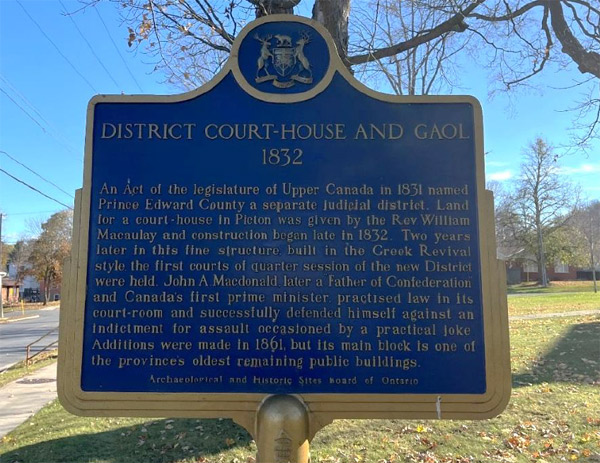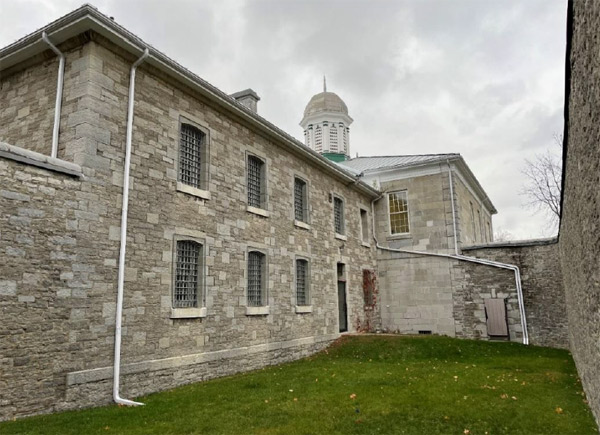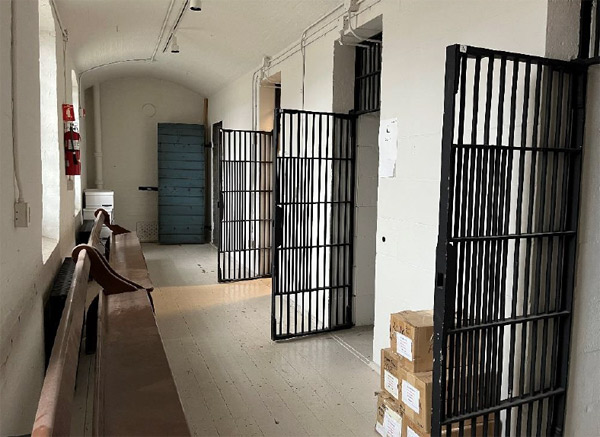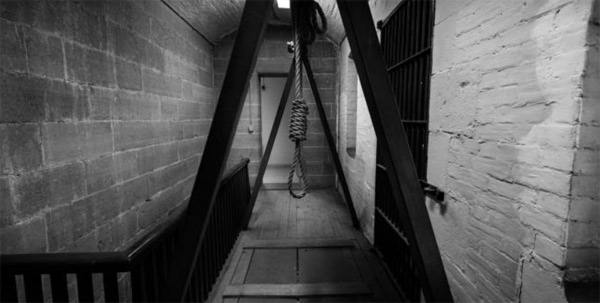Picton courthouse one of province’s oldest remaining buildings
Administrator | May 22, 2024 | Comments 0
By Sharon Harrison
First constructed in 1832, many people recognize the County courthouse, even if they haven’t been inside, as the imposing Georgian-style structure located on Union Street. It houses old jail cells (and is infamously known for the only hanging in Picton’s history), the courthouse and land registry office where part of the building is home to Service Canada and Ontario branches.
The Picton courthouse is one of the first buildings to be established within the historical village of Picton (known also as Delhi) on the east side of Picton Bay, holding a long-standing position within the neighbourhood which developed around it.
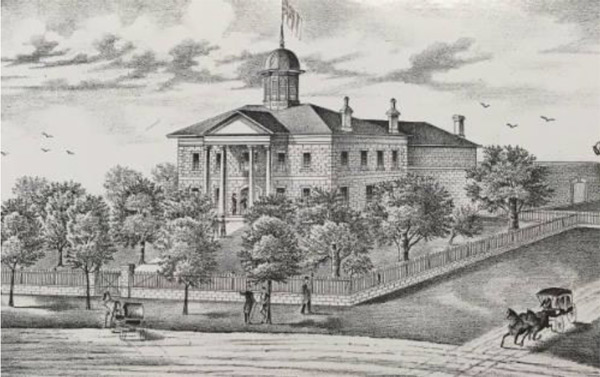
Picton Courthouse illustrated in 1878 with the cupola, rear jail addition, and jail yard walls visible (Belden, 1878).
During the built and cultural heritage advisory committee meeting earlier this month, Meredith Stewart, with Toronto-based ASI Heritage, provided an update of the November 2023 presentation on the cultural heritage evaluation and recommendations report for the courthouse, one of the province’s oldest remaining public buildings.
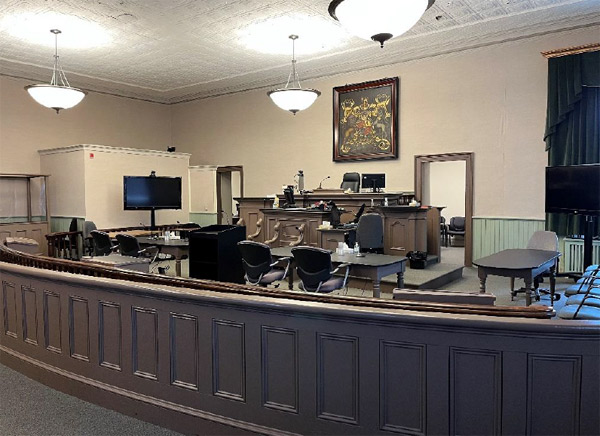 Picton courthouse, and in particular the second floor courtroom, is one of only a handful of remaining and operating courthouses in Ontario that were designed and used for the legal procedures in place in Upper Canada in the early 19th–century.
Picton courthouse, and in particular the second floor courtroom, is one of only a handful of remaining and operating courthouses in Ontario that were designed and used for the legal procedures in place in Upper Canada in the early 19th–century.
It has been established that based on the results of the evaluation, the 50 Union Street structure, which is owned by the Ministry of Infrastructure, can be considered a provincial heritage property of provincial significance, but it also retains local cultural heritage value.
The property is also eligible for designation under Part IV of the Ontario Heritage Act, should it leave provincial control.
The property is not listed or designated on the municipal heritage register, however, it is recognized as a provincial heritage property of provincial significance, and two heritage plaques are located on the site. The property is locally considered an important historical building and is a property of interest.
In the summary, Stewart said a key component of the reporting process has been including consultation with relevant and interested stakeholders, and to learn from the community interest in the property, learn about aspects of the property’s history that might not have been included in previous reporting.
“The property can be considered a provincial heritage property of provincial significance, and the report also acknowledges that the property retains local cultural heritage value and is eligible for part four designation should it ever leave provincial control.”
The list of heritage attributes was also refined which now recognizes the land registry office as a “contributing building that speaks to the evolution of the complex as a site of continuing judicial and civic functions within the County”.
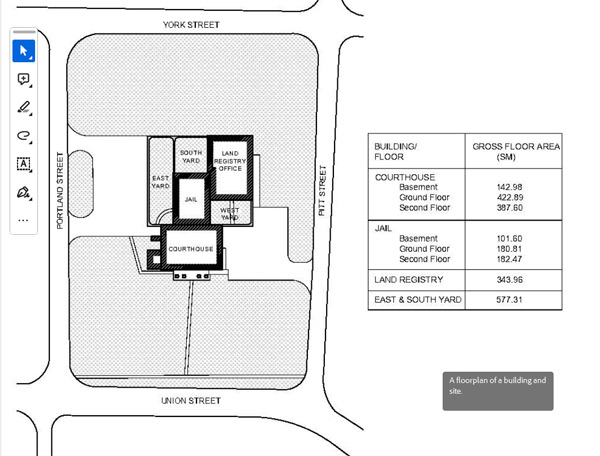 The property is 2.3 acres in size, rectangular in shape, and consists of a mid-19th century courthouse and jail addition, as well as a 1970s land registry office which is constructed within a portion of one of the jail yards. It is bounded by Union Street to the north, York to the south, Pitt to the west, and Portland to the east.
The property is 2.3 acres in size, rectangular in shape, and consists of a mid-19th century courthouse and jail addition, as well as a 1970s land registry office which is constructed within a portion of one of the jail yards. It is bounded by Union Street to the north, York to the south, Pitt to the west, and Portland to the east.
Additional features, such as the portico and cupola were added in the 1840s and 1860s. A jail extension was constructed from 1867 to 1868, including the addition of stone walls to form jail yards. The courthouse and jail are two-storey limestone buildings that form a T-shaped footprint. In 1975, a land registry office was integrated into the west jail yard.
A 2015 archaeological assessment, completed in advance of minor improvements to the grounds and installation of a new walkway around the rear of the jail, found that portions of property “are in proximity to or contains features signalling archeological potential.” The assessment determined that the grassed jail yards retain potential for buried archaeological remains and graves of individuals who died at the jail.
Stewart notes that attributes of the property also include the views within the property boundary, as well as toward the property from Union Street looking up the ascent to the harbour.
“The report acknowledges the views outside the property are obviously not within the control of the property owner, but it was important to include that those views are important, and are now recorded.”
Built in 1832 to 1834 (finally completed in 1841/1842), the courthouse was originally a single building with a rectangular footprint before there was the jail addition, where it served as a courthouse and a land registry office. With the expansion of the jail, it brought a lot of the jail cells that were formally in the basement into above ground into its own dedicated wing, something that was part of the reform of jail designs at the time, Stewart said.
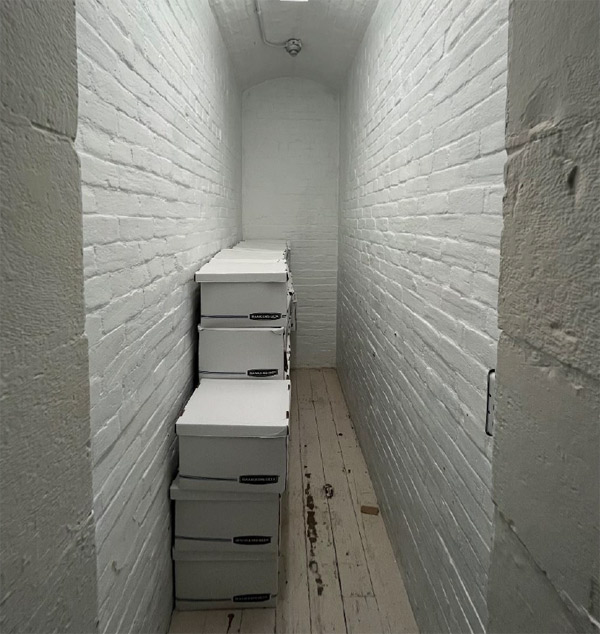
Example of a typical jail cell featuring barrel vaulted ceiling, brick walls, and wood floors. The size of the cell was determined by the occupant and nature of the crime committed, with similar sized cells grouped together
“Work on the courthouse continued at least until the spring of 1841. Construction was delayed when funds ran low, workmen were unavailable or unreliable, and the uprisings of 1837 to 1838 intervened,” notes the report.
It also notes that the building was to be of cut stone, 70-feet long, 44-feet wide, and two storeys high, with a tin roof.
One of the committee members noted that the courthouse property is not designated or listed on the municipal heritage registry, but recognizes a provincial, and asked if they were mutually exclusive.
Miranda Brunton with Toronto-based Infrastructure Ontario explained that under the Ontario Heritage Act, looking at provincial identification of heritage is under a different section (part three), where municipal designation is under part four and part five, depending on whether it is individually designated or part of a heritage conservation district.
“They are mutually exclusive; they can talk to each other and as part of the provincial heritage evaluation, we do look at local significance, so we can reach out to communities and so forth,” said Brunton. “Mechanically, a municipality can choose to designate a property, but for the Ontario Heritage Act, that doesn’t actually turn on. So if you list it or designate it, it acts more of a symbol of an interest in the property to us.”
She said, if the municipality were to designate the property, for example, they don’t require heritage permits to go through it.
“It’s more about how much you want to invest in the property, and I understand it can take a lot of time to designate a property, so sometimes municipalities simply list it to tell the province that you are interested.”
She said through the community engagement, it is noted that there is a lot of community interest in the property.
“So, mechanically, you can do it, but functionally, it doesn’t work the same,“ added Brunton. “If we were ever to the point of wanting to sell the property (and there is no plans to do this whatsoever, so it’s very much theoretical), we would likely go to the municipality and ask if you were interested in designating the property at that time, to ensure heritage protection moving forward.”
Another committee member asked if the province decided to decommission or sell the property at some point, would it automatically be protected, or it would require some municipal action to make sure it continued to be protected.
Brunton explained that there are lots of different ways to legally protect heritage properties, and should it ever get to that point, a number of options can be explored.
Councillor John Hirsch sought clarification that under the current state of things, whereas the province that has designated it, no permits are required for modifications.
“If we designated it municipally, there would be a permanent requirement; you would be permitting yourselves, because the province owns it,” said Hirsch, “but is there any additional protection provided then by municipal designation if we decided to do that?”
Brunton confirmed the municipality could designate the building, “and we would opt to work with you to get heritage permits or anything, if we needed to do alternations for the heritage attributes, and so forth”.
“We legally don’t have to, but because we know there is interest, we would work with the city through the standards and guidelines,” she said. “Basically, it’s a similar framework if we did do anything that required alternations or a heritage impact assessment, we would also come to the municipality anyway as part of the work to evaluate that.”
The property has continued to serve as a courthouse since its construction in the mid-19th century, though the jail is no longer in service where the jail was transferred from the County to the province in the late 1960s, and continued in use as a provincial prison, overnight lockup, and holding cells for the court.
The report outlines how on June 10, 1884, the jail was the scene of a double hanging with the incident becoming legendary within Prince Edward County because it was the only public hanging ever to occur at the Picton jail.
“The hanged men maintained their innocence, and the hanging was poorly carried out; where the hanging took place on June 9, 1884 on a double gallows constructed at the rear of the jail.”
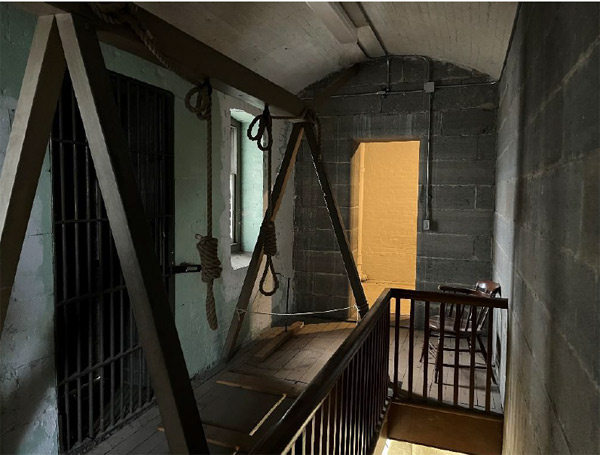
Detail of the alterations to the south passageway to accommodate the double hanging that occurred there in 1884 (A.S.I., 2023).
Note: Prince Edward County history buffs click here to read extensive County history in the Draft Picton Courthouse Cultural Evaluation and Recommendations Report
The Lazier murder trial of 1884 – did they get the right men?
Filed Under: Arts & Culture • Featured Articles • Local News
About the Author:




